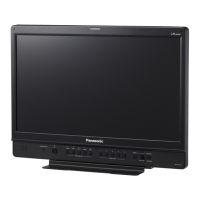
Do you have a question about the Panasonic BT-LH2170 and is the answer not in the manual?
General information about the LCD video monitor.
Covers electrical safety, grounding, environmental, and physical safety warnings.
Details FCC compliance and a comprehensive list of safety instructions.
Specific safety and caution notes for the BT-LH2170E model.
Information on EU directives, Turkish compliance, and India-specific disposal.
Guidance on using correct AC cables and replacing fuses for safety.
Explanation regarding the Power Management function status.
Information on EMC standards, environments, and conditions for compliance.
Discusses performance levels and methods to minimize interference effects.
Guidelines for safe lifting, handling, and preventing damage during transport.
Information on manual scope, illustrations, trademarks, and references.
Key usage guidelines including pixel characteristics, installation, and environmental factors.
Lists standard and optional accessories provided with the unit.
Highlights key features like LCD panel, image processing, 3D assist, and interfaces.
Provides detailed measurements and mounting recommendations for the monitor.
Identification of controls on the front panel, including Tally Lamp and screw holes.
Overview of connectors and ports located on the rear panel.
Operation of power switch, input selection, and function buttons.
Usage of MENU, rotary knob, and RETURN buttons for menu interaction.
Details on the speaker and headphone jack for audio output.
Description of VIDEO, SDI input/output, DVI-I, and HDMI terminals.
Details on audio input, GPI, RS-232C, and RS-485 terminals.
Instructions for connecting AC and DC power cables to the unit.
Important notes regarding external DC power supply usage and safety.
Step-by-step guide for removing the monitor stand.
Step-by-step guide for securely attaching the monitor stand.
Explanation of the indicators and information shown on the operating status display.
How to access and navigate the Main, Function, and Input Select menus.
How to use the PICTURE menu for image adjustments like contrast and brightness.
Information on the audio volume bar meter and sharpness display.
How the status of assigned functions is displayed.
Details on the audio level meter, its display modes, and color coding.
Explains time code display modes and formats for SDI signals.
How closed captions are displayed from SDI or VIDEO signals.
Functionality for displaying text and tally via RS-485 interface.
Step-by-step guide for navigating the Main Menu.
Instructions for operating the Function and Input Select menus.
How to adjust picture settings like PHASE, CHROMA, and BRIGHT.
Steps for adjusting audio volume and using the mute function.
Procedure to save up to five sets of custom configurations.
Procedure to load saved user data or factory defaults.
A visual representation of the Main Menu hierarchy and available settings.
How to switch between 2D and 3D assist modes.
Configuration for aspect ratio markers, background brightness, and types.
Settings for center marker, cross marker, color, and GPI marker assignments.
Adjusting cross hatch grid density and marker size.
Visual examples and explanations of various 16:9 aspect ratio markers.
Visual examples and explanations of various 4:3 aspect ratio markers.
Settings for gamma curves, color temperature, and sharpness adjustments.
Settings for IP mode, monochrome, anamorphic lens, and scan modes.
Configuration for SD aspect ratio and zebra function ranges.
Adjusting color temperature, RGB gain, and bias for white balance.
Resetting gain and bias values to selected color temperature defaults.
Settings for sub-window types, menu position, and status display.
Configuring input names, saving/loading user data, and power management.
Settings for color space, power down, and calibration functions.
Step-by-step procedure to change input terminal names.
Lists necessary equipment for calibration, including analyzers and cables.
Instructions for performing auto calibration and resetting calibration data.
Detailed steps for initiating and completing the auto calibration process.
Guide to performing a reset operation for calibration data.
How to assign various functions to the physical FUNCTION buttons.
Functions affecting display, signals, and assist modes (HV DELAY, SD ASPECT, SCAN).
Functions for image adjustments and monitoring (GAMMA, MONO, ZEBRA, WFM, MARKER).
Explains operations for TIME CODE, CLOSED CAPTION, AUDIO MUTE, etc.
Lists conditions where functions are disabled or inoperable.
Details limitations on functions based on modes like SUB WINDOW, PIXEL TO PIXEL, etc.
How function operations are displayed when a FUNCTION button is pressed.
Notes on mutual exclusivity of 2-screen functions and their display status.
How to skip specific function settings during operation.
Using SUB WINDOW for screen comparison in FULL and PART modes.
How to display and switch between waveform and vector displays.
Details on vector display enlargement, scale, and supported formats.
Using the zebra function to help adjust aperture and exposure levels.
Utilizing Y MAP for visual confirmation of overall screen brightness.
Splitting the screen to display SDI1 and SDI2 inputs side-by-side.
Using Picture Assist to check effects on different signals in a split-screen view.
Checking images at native resolution and adjusting display position.
Using cross hatch markers for composition assistance and other tasks.
Using FOCUS-IN-RED to simplify camera focusing and highlight outlines.
Enabling GPI functions and assigning specific operations to GPI terminals.
Selecting formats for VIDEO input (AUTO, NTSC, PAL).
Configuring DVI-I, Digital, Analog, Component Level, and RGB-COMP. inputs.
Selecting audio input, grouping channels, and configuring speaker output.
Settings for audio volume bar meter, channel selection, and information display.
Settings for waveform/vector display position, mode, and scale.
Configuring time code display modes and closed caption settings.
Settings for caption service, IMD position, and character color.
Configuring local/remote control, protocol version, and RS-485 interface.
Displays total operating hours and backlight hours.
Simultaneous input method and list of 3D assist functions.
Steps to activate 3D assist mode and access its menu.
Inverting SDI1/SDI2 images for basic 3D camera adjustments.
Shifting SDI2 images to check lens axis and rotation offset.
Checking subject capture from one side and comparing images.
Checking subject position for depth and convergence point.
Overlaying images with checkerboard to check brightness and color differences.
Enlarging image parts to check focus and zoom offsets.
Using horizontal markers to check vertical offset and line counts.
Displaying vertical markers to check parallax width.
Selecting overlay or gray display modes for parallax.
Adjusting marker position and interval for parallax check.
Availability of VIDEO CONFIG settings across input terminals.
Restrictions on MARKER settings based on input and display modes.
Availability of SYSTEM CONFIG settings across input terminals.
Restrictions for FUNCTION, GPI, INPUT SELECT, AUDIO settings.
Restrictions for WFM/VECTOR, TIME CODE, CLOSED CAPTION, etc.
Restrictions for CONTROL and HOURS METER settings.
Lists settings available in 3D Assist Mode for SDI inputs.
Restrictions for CONTROL and HOURS METER in 3D Assist Mode.
Explains GPI terminals and how functions are assigned to them.
Details functions assigned to GPI terminals and their operating conditions.
Lists GPI assignments for PIXEL TO PIXEL, FOCUS-IN-RED, ZEBRA, and STANDBY.
Explains priority rules when multiple GPI functions are activated.
Details pin assignments, connectors, and communication parameters for RS-232C.
Explains command format, response formats, and error codes for RS-232C.
Details pin assignments, connections, and command format for RS-485.
Information on response formats, error responses, and parameters for RS-485.
Commands for input select, contrast, brightness, chroma, phase, volume, backlight.
Commands for marker settings, gamma selection, and color temperature.
Commands for sharpness, IP mode, mono, zebra level, and picture assist.
Commands for R/G/B color, audio output select, and input select.
Commands for SELECT R, AUDIO OUT SEL., and AUDIO MUTE.
Query commands for input select, contrast, brightness, chroma, phase, volume, backlight.
Query commands for marker settings, gamma selection, and color temperature.
Query commands for format check, blue only, HV delay, black mode, window settings.
Query commands for WFM/Vector, white balance, and pixel settings.
Query commands for in monitor display, character color, input select, and group select.
Explains the importance of regular maintenance for LCD panel longevity.
Describes the LOW VOLTAGE warning indication and its remedy.
Instructions for safely cleaning the monitor cabinet and LCD panel.
Details power requirements and physical measurements of the monitor.
Specifies operating conditions and characteristics of the display panel.
Lists all available input and output connectors and their specifications.
Lists supported video input signal formats for various terminals in 2D mode.
Lists supported PC input signal formats for HDMI, Analog, DVI-I, and Digital.
Details compatible 3G-SDI formats, pixel resolution, bit depth, and frequency.
Lists signal formats supported when the unit is in 3D Assist Mode.
Details supported signals, standards, and decoding channels for closed captions.
Information on character support, caption services, and specific format capabilities.
Displays the internal chart used for adjustment, showing grayscale and color bars.
Guidelines for proper disposal of electronic equipment according to regulations.
Instructions on how to open PDF manuals from the CD-ROM.
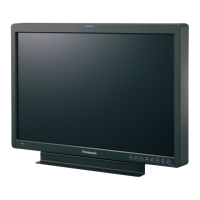
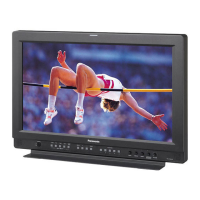
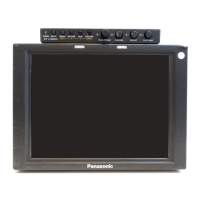

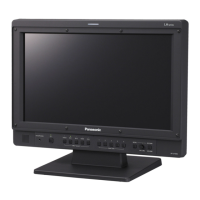

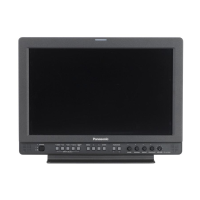



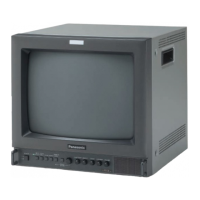
